Thanksgiving Day holds a prominent place in the cultural fabric of the United States and has become a cherished national holiday. Rooted in the historical narrative of North America, this day brings families and communities together around the Thanksgiving table to celebrate gratitude, unity, and the spirit of togetherness. One of the quintessential aspects of this holiday is the presence of Thanksgiving symbols, which encapsulate the essence of the occasion and its historical origins. From the iconic cornucopia representing abundance to the symbolic turkey that graces countless tables, these Thanksgiving symbols connect the past with the present, symbolizing the shared appreciation for the bounties of life. As a time-honored tradition, Thanksgiving serves as a reminder of the importance of expressing gratitude and fostering a sense of unity, making it much more than just a day off—it’s a reflection of the nation’s values and history.
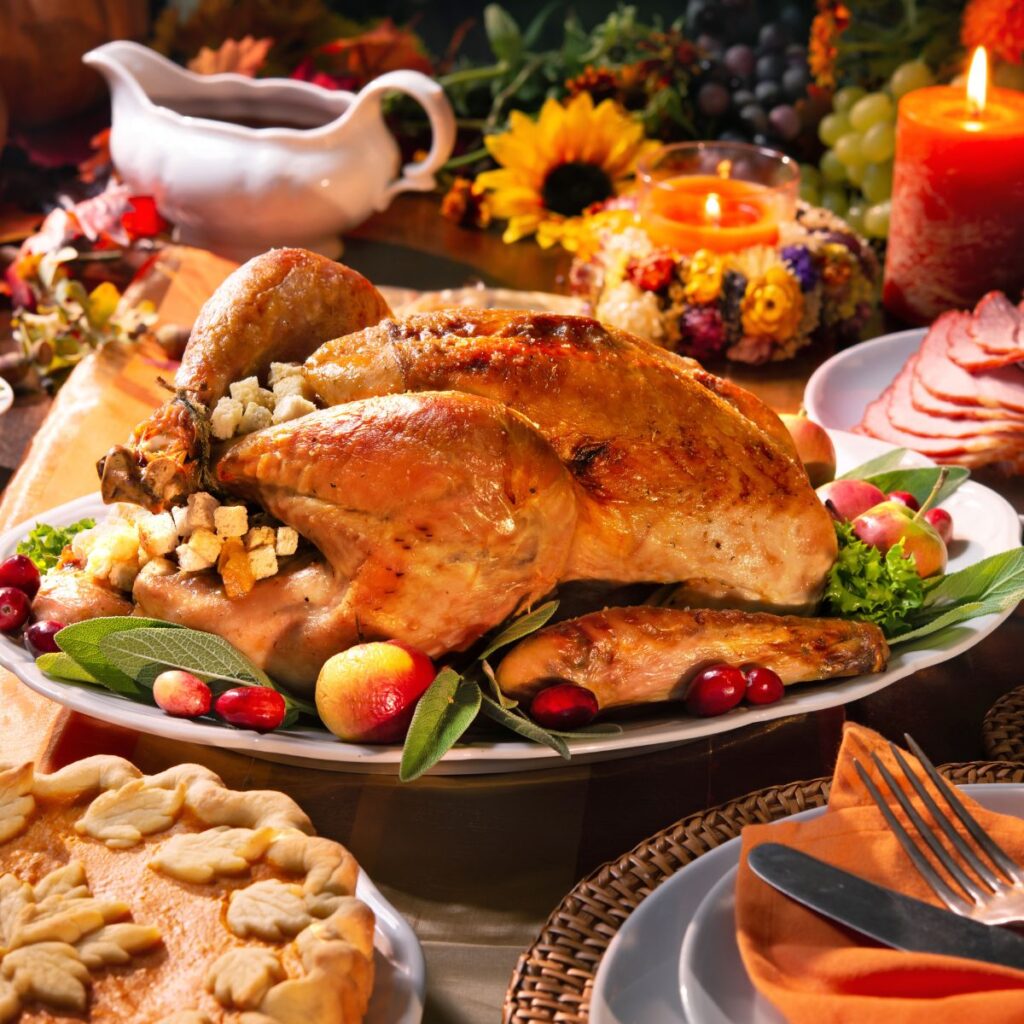
Discloser Note:
This post may contain affiliate links, which means I make a small commission at no extra cost to you. See my full disclosure here.
Table Of Contents
Traditional Thanksgiving Symbols
Native American Heritage
Native American heritage stands as a profound and integral symbol of Thanksgiving, encapsulating the deep-rooted connections between indigenous cultures and the land. The history of Thanksgiving cannot be told without acknowledging the essential role of Native Americans, who generously shared their knowledge of the land, agriculture, and sustainable living with the early settlers. Native American heritage serves as a testament to the vital principle of harmony with nature, the reverence for the earth’s resources, and the significance of community ties.
In the context of Thanksgiving, Native American heritage symbolizes the spirit of cooperation and the acknowledgment of shared humanity. It’s a reminder that gratitude extends beyond the immediate family to embrace the broader community and the land that sustains us all. Honoring Native American heritage on Thanksgiving is an opportunity to pay homage to the original stewards of the land, recognizing their wisdom and contributions, and acknowledging the ongoing importance of preserving their culture and traditions. In this way, Native American heritage serves as a symbol that enriches the holiday with deeper layers of meaning, underscoring the values of unity, respect, and interconnectedness that lie at the heart of Thanksgiving.
Pilgrim Hat
The pilgrim hat, with its distinctive wide brim and buckle-adorned band, holds a significant place in the cultural and historical tapestry of Thanksgiving Day. Stemming from the colonial era in the United States, the pilgrim hat is a symbol deeply intertwined with the origins of the holiday.
The pilgrim hat’s symbolism is rooted in the early American settlers, known as the Pilgrims, who arrived on the shores of North America seeking religious freedom. These individuals, having endured a perilous journey across the Atlantic, adopted distinctive clothing as part of their identity. The iconic hat, often black and conical in shape, served both practical and symbolic purposes.
Cornucopia
The traditional cornucopia, often referred to as the “horn of plenty,” is a symbol deeply ingrained in the Thanksgiving narrative, embodying the essence of abundance, harvest, and gratitude. Its origins trace back to ancient mythology, where it was associated with various deities and myths, all highlighting the theme of overflowing blessings and prosperity. In the context of Thanksgiving, the cornucopia holds a rich symbolism that resonates with the core values of the holiday.
The cornucopia’s shape, resembling a horn or a basket with a curved opening, visually represents the idea of plenty and the bountiful harvest. It is often depicted brimming with an assortment of fruits, vegetables, grains, and other agricultural produce. This imagery underscores the significance of the fall harvest, which has historically been a time of celebration and feasting in many cultures. As families gather around the Thanksgiving table, the cornucopia serves as a visual reminder of the Earth’s generosity and the fruits of diligent labor. It prompts reflection on the abundance that sustains us and fosters a sense of gratitude for the nourishment and resources that nature provides. In this way, the cornucopia becomes a tangible representation of thankfulness, connecting the modern celebration of Thanksgiving with age-old traditions of honoring the land’s offerings.
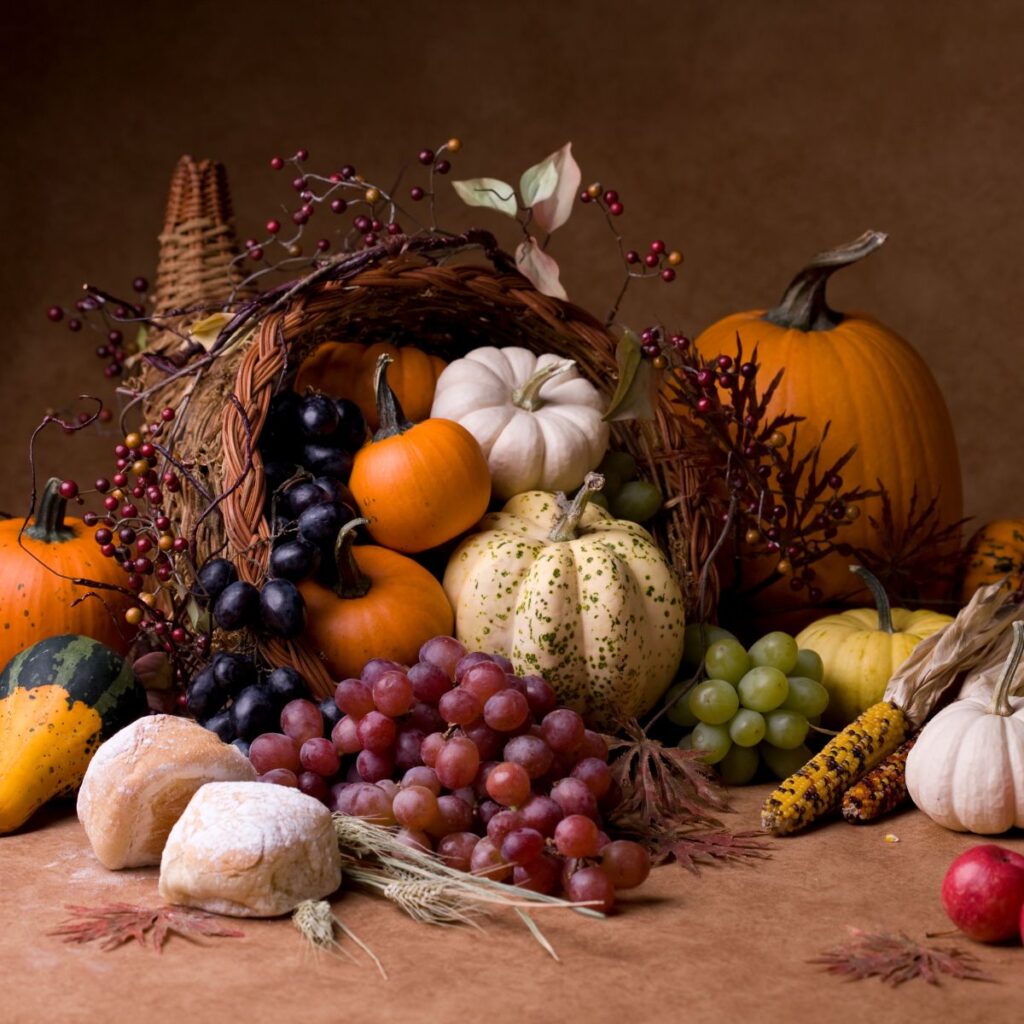
Turkey
The turkey, an iconic and enduring symbol of Thanksgiving, holds a central place at the heart of the holiday’s culinary and cultural traditions. Beyond its role as a delectable dish, the turkey serves as a reminder of the early interactions between Native Americans and settlers, when wild turkeys were abundant and shared during harvest celebrations. Today, the turkey’s presence symbolizes not only a sumptuous meal but also the values of togetherness and appreciation that define the essence of Thanksgiving.
Pumpkins
Pumpkins, with their warm and vibrant presence, have become an emblematic symbol of Thanksgiving, encapsulating the essence of the fall season and the spirit of gratitude. From the festive decorations adorning homes to the beloved pumpkin pies gracing Thanksgiving tables, these versatile gourds embody the harvest’s bounty. Pumpkins represent the culmination of a year’s worth of labor, serving as a reminder of the cyclic nature of life, growth, and renewal.
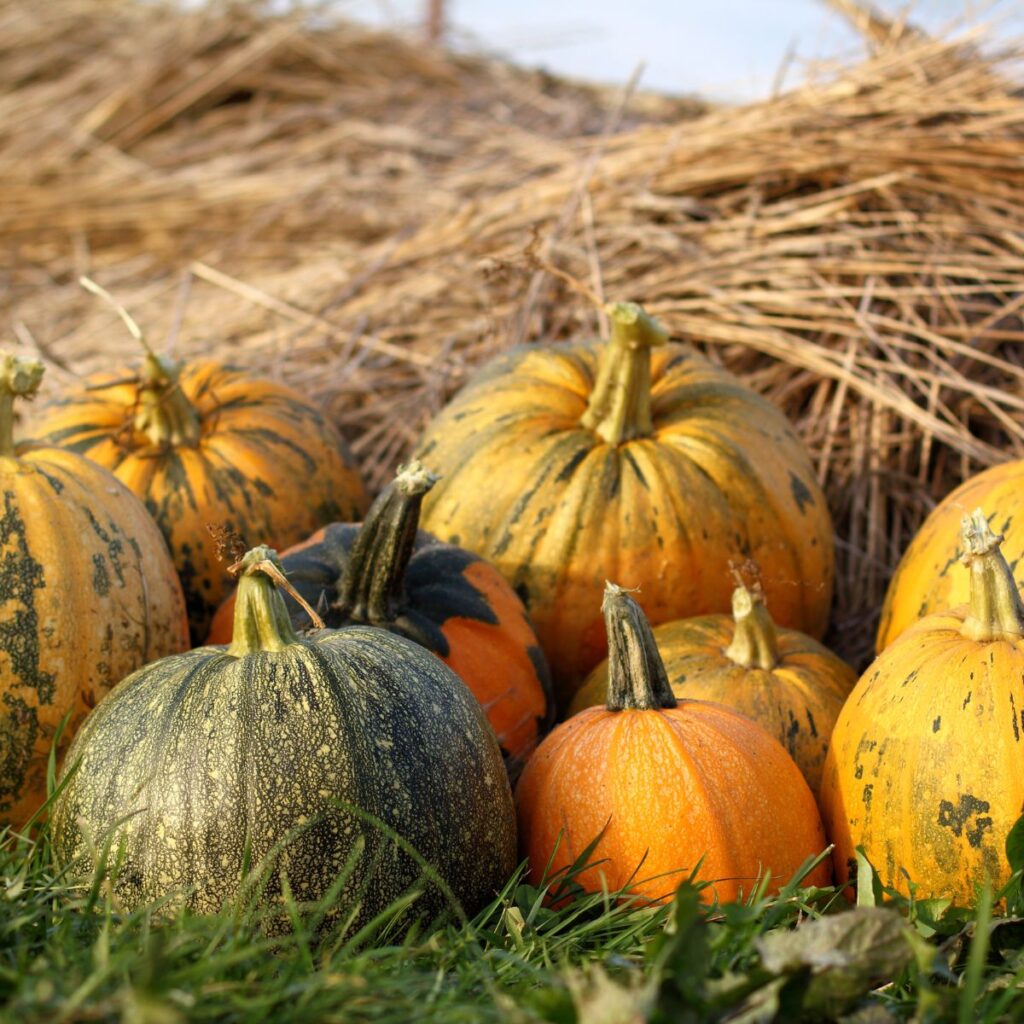
Gourds
Gourds, with their diverse shapes and earthy colors, hold a meaningful place as a symbol of Thanksgiving, embodying the themes of harvest, creativity, and sustenance. These hearty fruits have been utilized for centuries, not only as practical vessels for storage and cooking, but also as objects of artistic expression. During Thanksgiving, gourds serve as reminders of the agricultural riches reaped from the land and the resourcefulness of utilizing every part of the harvest. Their presence can be seen in decorative displays, carved designs, and even as containers for seasonal offerings. Gourds symbolize the interconnectedness between nature’s provisions and human ingenuity, reflecting the spirit of gratitude for the earth’s gifts and the capacity to transform them into both practical and aesthetic treasures.
Sharing a Meal
Sharing a meal lies at the heart of Thanksgiving’s symbolism, representing the essence of gratitude, unity, and communal harmony. As loved ones gather around the table to partake in a feast that often features traditional dishes and cherished family recipes, the act of sharing nourishment becomes a powerful gesture of appreciation. This symbolic ritual transcends mere sustenance, transforming a simple act into a profound expression of togetherness. The act of breaking bread together signifies a shared journey, the recognition of the abundance that life offers, and the acknowledgment of the ties that bind families and friends. It echoes the historical significance of Native American and early settler interactions, fostering the understanding that the act of giving and receiving sustenance is an act of love and kinship. In essence, sharing a Thanksgiving meal symbolizes the unity born from shared experiences, and through this simple yet profound act, the true spirit of thankfulness is embraced and celebrated.

Pilgrim Shoes
Pilgrim shoes, often depicted as buckle-adorned footwear, serve as a subtle yet resonant symbol of Thanksgiving, encapsulating the historical narrative of the early American settlers and their enduring journey towards religious freedom. These shoes evoke the arduous pilgrimage of the Pilgrims, who braved uncertainties and challenges to establish new lives in unfamiliar lands. The symbolism of these shoes encompasses both the physical and spiritual dimensions of their voyage, representing resilience, sacrifice, and the pursuit of a better future. As a Thanksgiving symbol, Pilgrim shoes remind us of the courageous spirit that paved the way for the holiday’s origin, inspiring a sense of gratitude for the liberties and opportunities that have since blossomed.
Pilgrim Ships
Pilgrim ships stand as enduring symbols of the treacherous yet transformative journey embarked upon by the early settlers who sought religious freedom in the New World. These ships, such as the Mayflower, hold a significant place in the Thanksgiving narrative, embodying the Pilgrims’ courage, determination, and the sacrifices made for a better life. Just as these vessels carried the pioneers across stormy seas towards uncharted territories, they also carry the spirit of resilience and hope that characterizes Thanksgiving. The image of pilgrim ships serves as a poignant reminder of the challenges faced and the strength drawn from unity, inspiring gratitude for the opportunities that have arisen from those early struggles.
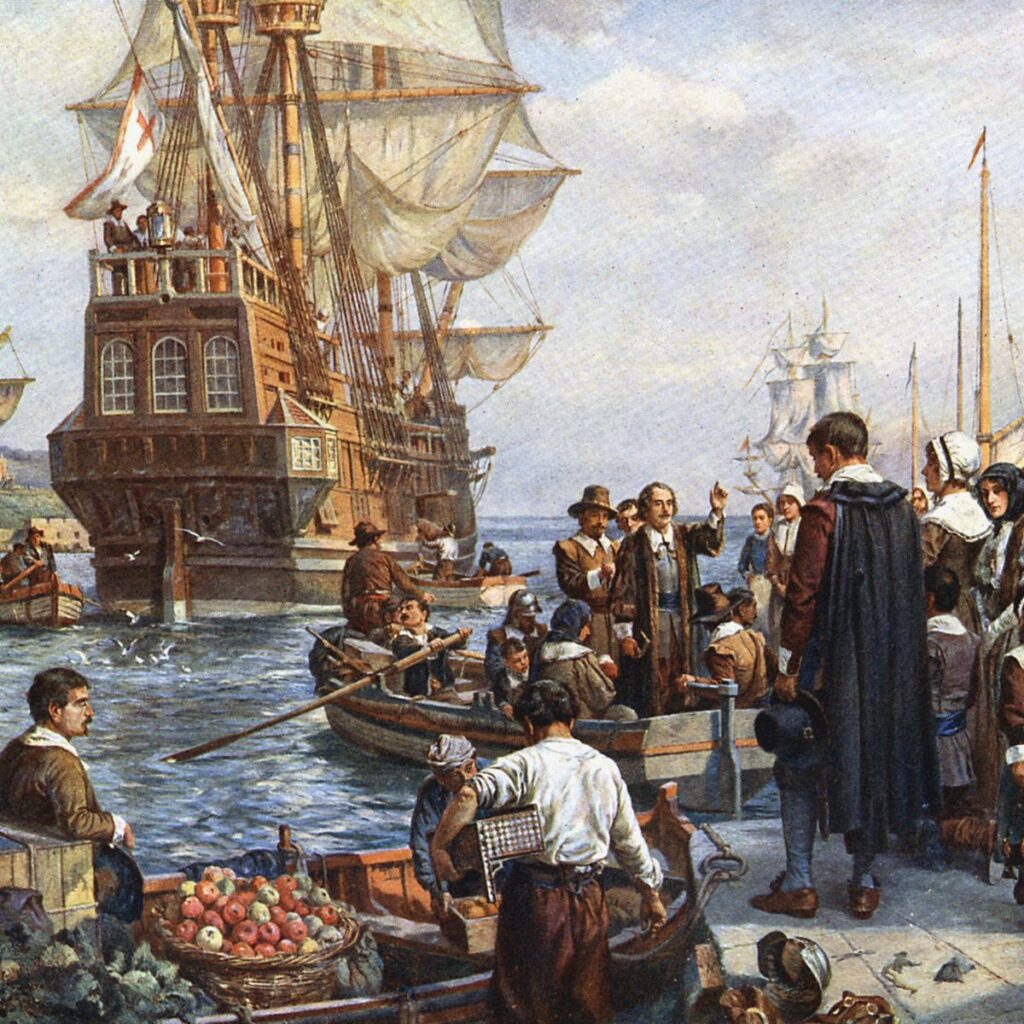
Cultural Thanksgiving Symbols
Harvest Moon
The Harvest Moon, a celestial phenomenon associated with the autumn season, holds a profound symbolism for Thanksgiving celebrations. Emerging during harvest time, this radiant moon is a sign of reverence for the bountiful first harvest. Its connection to ancient beliefs, including its association with the Greek god Zeus, deepens its significance.
Gratitude Wreaths
Gratitude wreaths stand as eloquent symbols of Thanksgiving, weaving together nature’s beauty and the heartfelt sentiments of appreciation. Adorned with an array of autumnal elements, these wreaths symbolize the culmination of the harvest season and the act of giving thanks. Crafting and displaying gratitude wreaths not only serve as a creative expression but also reflect the essence of the holiday by inviting individuals to pause and reflect on the blessings that have graced their lives. Just as each carefully chosen element contributes to the wreath’s charm, so too does the act of creating and sharing these wreaths contribute to the sense of unity and gratitude that define Thanksgiving.
Bountiful Baskets
Bountiful baskets, overflowing with the gifts of the harvest, stand as poignant symbols of Thanksgiving’s spirit of abundance and appreciation. Laden with a colorful array of fruits, vegetables, and grains, these baskets evoke the culmination of nature’s generosity. Their symbolism extends beyond the physical offering, embodying the interconnectedness between humanity and the earth. Bountiful baskets represent the communal sharing of life’s riches and mirror the values of generosity, unity, and thankfulness that lie at the heart of Thanksgiving.
Indian Corn
Indian corn, with its vibrant hues and historical significance, holds a special place as a symbol of Thanksgiving. Reminiscent of the first Thanksgiving feast, this uniquely colored corn represents the Native American contributions that marked the inception of the national holiday. With its white corn kernels, often adorned with colorful husks, Indian corn embodies the unity between different cultures during that inaugural thanksgiving celebration.
Blessing Hands
Blessing hands hold a special symbol of Thanksgiving, embodying the spirit of gratitude and good fortune. With intertwined fingers forming a heart-shaped gesture, blessing hands remind us of the many good things that grace our lives. This symbol serves as a visual reminder of the interconnectedness between our own hearts and the hearts of others, inspiring us to be thankful for the bonds of friendship, family, and the kindnesses that enrich our days.
Harvest Scarecrow
The harvest scarecrow stands as a charming and endearing symbol of Thanksgiving, embodying the essence of the autumnal season and the celebration of nature’s bounty. These cheerful sentinels of the fields are not only practical tools for protecting crops, but they also hold a deeper symbolism. The presence of a harvest scarecrow signifies the close connection between the land, the changing seasons, and the agricultural cycles that sustain us.
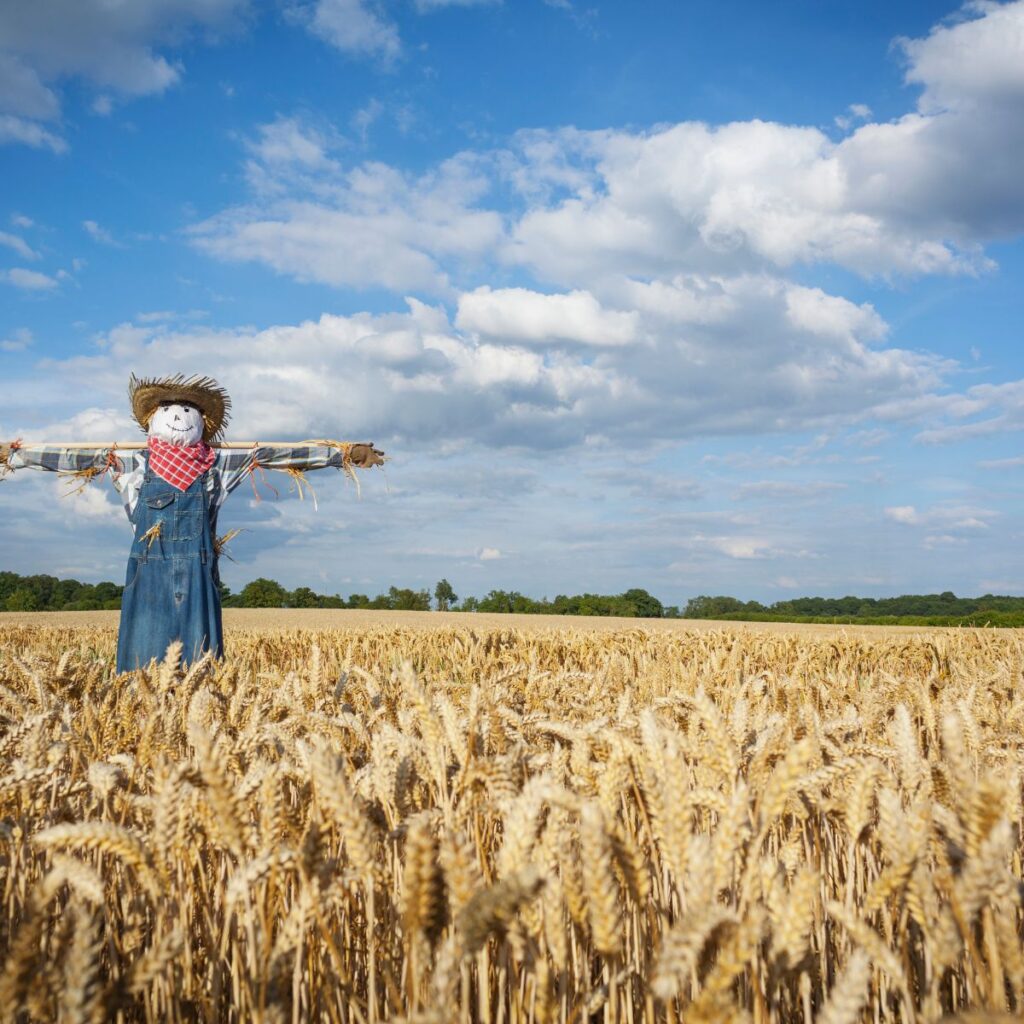
Harvest Festival
The harvest festival stands as a vibrant symbol of Thanksgiving, encapsulating the spirit of gratitude and the celebration of abundance. Often playfully referred to as “turkey day,” the harvest festival is synonymous with the Thanksgiving celebration, being the most common symbol of this holiday. Rooted in a tradition that harkens back to ancient European harvest festivals, this festive occasion brings families and communities together to revel in the joys of a bountiful harvest. The harvest festival’s significance lies not only in the sumptuous feasting but also in the reverence for the land’s generosity and the connections that bind us to nature’s cycles. It’s a time when the community unites, echoing the communal spirit of those early European harvest festivals, to give thanks for the blessings of the season and the cherished moments shared together.
Feast of Grains
The feast of grains stands as a poignant and timeless symbol of Thanksgiving, embodying the deep-rooted connection between humanity and the earth’s sustenance. This celebration of grains, whether in the form of bread, porridge, or other culinary delights, speaks to the fundamental role that grains have played in nurturing civilizations throughout history. From ancient cultures that revered grains as life-givers to modern times when grains remain a staple of diets worldwide, this feast encapsulates the cyclical nature of life and the reliance on the earth’s provisions.
Harvested Wheat
Harvested wheat stands as a poignant and enduring symbol of Thanksgiving, embodying the culmination of hard work, patience, and the blessings that come from a fruitful harvest. As the golden fields yield their bounty, harvested wheat serves as a visual representation of the cycle of sowing, tending, and reaping that sustains humanity.
Feast of Fruits
The feast of fruits stands as a vibrant and flavorful symbol of Thanksgiving, embodying the rich diversity of nature’s offerings and the joys of the harvest season. With a colorful array of ripe fruits adorning tables and displays, this feast not only tantalizes the senses but also encapsulates the spirit of abundance and gratitude.
Modern Thanksgiving Symbols
Friendsgiving
Friendsgiving, a modern staple of the American holiday season, has become an increasingly popular and cherished tradition that complements the more traditional family-centered celebrations of Thanksgiving. As a major holiday, Thanksgiving often revolves around gathering with family members to share a festive meal and express gratitude. However, in the dynamic landscape of today’s interconnected friendships and diverse social circles, Friendsgiving has emerged as an innovative way to extend the spirit of togetherness beyond the confines of the immediate family. Friendsgiving typically involves close friends coming together to celebrate a day of thanksgiving, often sharing a bountiful feast reminiscent of the traditional dinner table spread during the holiday’s family-oriented festivities.
In the spirit of camaraderie, Friendsgiving offers a unique platform for individuals to create their own traditions, reflecting the evolving dynamics of modern relationships. Amidst the holiday season, Friendsgiving emphasizes the importance of chosen family, fostering a sense of unity and belonging that aligns with the overarching theme of Thanksgiving. The concept embodies the essence of gratitude by allowing friends to express appreciation for each other’s company and support, much like family members do during the traditional Thanksgiving gathering.
Thanksgiving Parade
Thanksgiving parades have evolved into iconic celebrations that bring communities together to mark the holiday season with joy and festive spirit. These parades, often characterized by colorful floats, giant balloons, marching bands, and lively performances, have become an integral part of Thanksgiving traditions in many places. Originating from the Macy’s Thanksgiving Day Parade in New York City, these spectacles capture the essence of unity and shared celebration. As families line the streets to watch the vibrant procession, the parades foster a sense of communal joy and togetherness, reminding everyone of the power of collective festivities during the holiday season.
Family Reunions
Family reunions during Thanksgiving are one of the favorite features of this beloved holiday, cherished as an essential part of all traditional meals. As loved ones gather around the table of every household, these reunions evoke a sense of warmth and familiarity, rekindling connections and strengthening bonds. The act of coming together transcends mere physical presence, serving as a poignant reminder of shared histories and the enduring ties that unite generations. Whether near or far, family members gather to celebrate a day of gratitude, embracing the opportunity to create cherished memories and weave new stories into the rich tapestry of their family’s legacy.
Family Portraits
Family portraits, a cherished tradition of Thanksgiving celebrations, encapsulate the spirit of togetherness and gratitude. As families gather to commemorate the holiday, capturing these moments through photographs becomes a way to freeze time and document the shared joy and laughter that fill the air. Family portraits not only serve as treasured mementos but also symbolize the interconnectedness of generations and the passing down of traditions. They encapsulate the essence of Thanksgiving, preserving the smiles, embraces, and the collective spirit of thankfulness that define this special day.

Culinary Thanksgiving Symbols
Turkey
The turkey, a legendary Thanksgiving centerpiece, has solidified its place as a culinary staple synonymous with the holiday’s feasting traditions. With historical roots dating back to the first Thanksgiving meal, where it was an integral part of the inaugural feast, the turkey has become one of the quintessential Thanksgiving Day symbols. Its presence during that first Thanksgiving dinner marked a bridge between Native American contributions and the settlers’ agricultural harvest, showcasing the spirit of unity and shared gratitude that underpins the holiday. Fast forward to today, the turkey remains a modern diet staple of Thanksgiving, embodying the tradition of abundance and celebration.
Cranberries
Cranberries hold a distinct place as a symbol of Thanksgiving, primarily through their role as a key ingredient in the cherished cranberry sauce. These berries, known for their abundance in North America, are not only a beloved ingredient in dishes like cranberry sauce and baked goods, but they also symbolize the essence of harvest and the changing seasons.
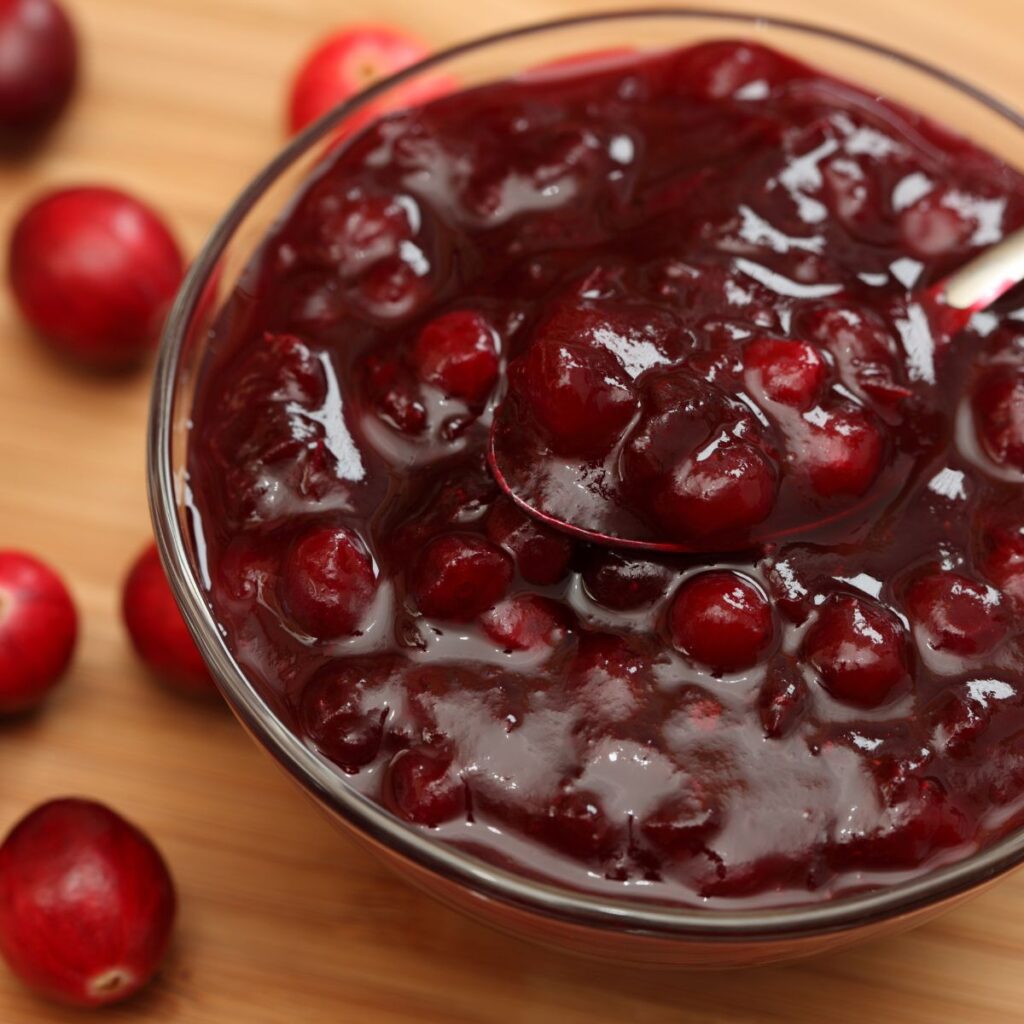
Apple Pie
Apple pie, a beloved Thanksgiving classic, embodies the warmth of the holiday season with its flaky crust and comforting aroma of baked apples and spices. Sharing a slice of apple pie at the Thanksgiving table is a tradition that speaks to the nostalgia of home and the sweetness of togetherness.
Maple Syrup
Maple syrup, drizzled over pancakes and waffles, adds a touch of natural sweetness to Thanksgiving breakfasts, encapsulating the flavors of autumn and the coziness of the holiday season. Its rich, amber tones mirror the changing leaves outside, enhancing the sense of warmth and comfort during festive gatherings.
Pumpkin Pie
Pumpkin pie, a quintessential Thanksgiving dessert, delights with its velvety texture and aromatic blend of spices, embodying the essence of fall flavors and family gatherings. The indulgence in a slice of pumpkin pie is a cherished tradition that wraps the palate in the nostalgia of autumn and the cherished moments shared around the Thanksgiving table.
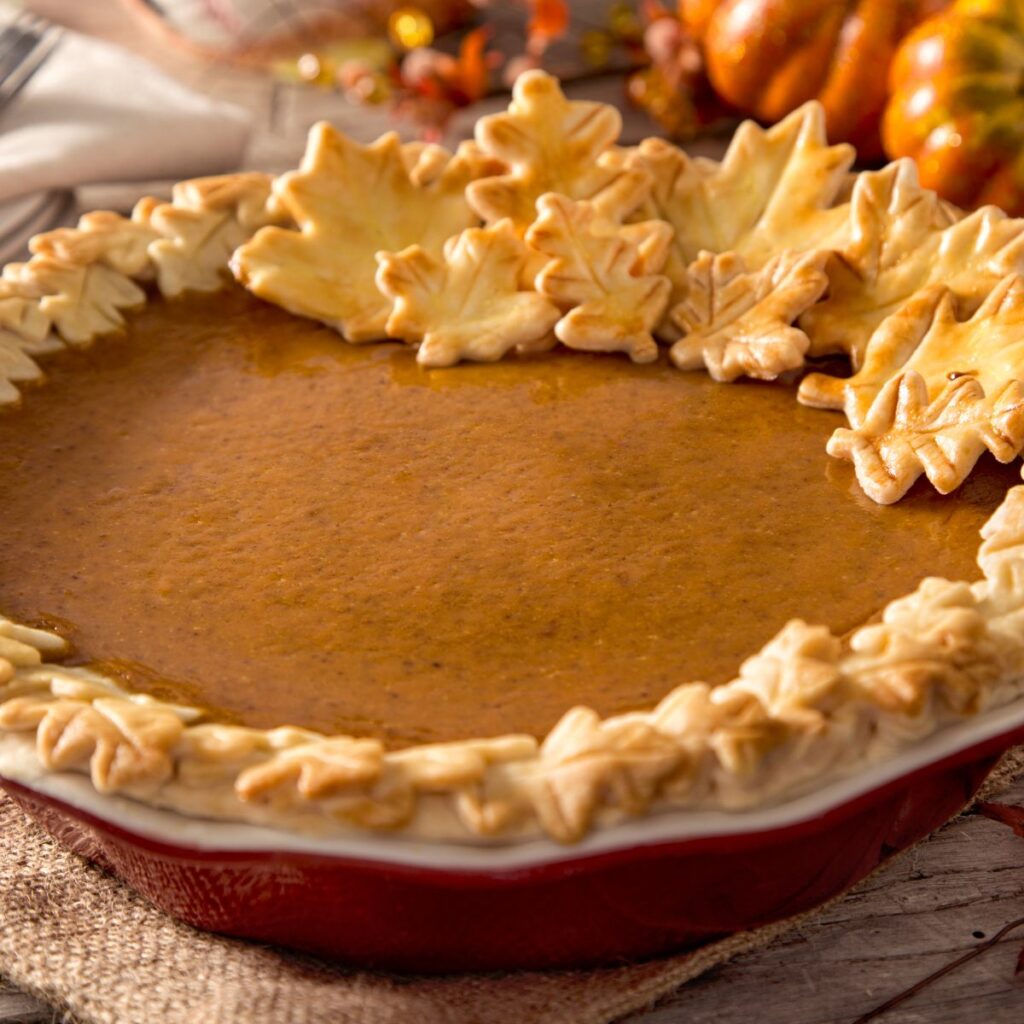
Decorative Thanksgiving Symbols
Acorns
Acorns, with their small and intricate forms, carry a symbol of potential and growth as they transform into mighty oak trees. In the context of Thanksgiving, these humble seeds serve as a reminder of the cycle of life, the interconnectedness of nature, and the gratitude for the smallest blessings that contribute to the grand tapestry of the world around us.
Autumn Leaves
Autumn leaves, with their brilliant hues of red, orange, and gold, signal the transition of seasons and serve as a captivating reminder of the passage of time. As they carpet the ground, these leaves become a natural symbol of change and the fleeting beauty that graces our world during the fall season, adding a touch of poetic melancholy to the Thanksgiving atmosphere.
Fireplace
Fireplaces, with their flickering warmth and cozy ambiance, become a heartwarming focal point during Thanksgiving gatherings, creating a backdrop for shared stories and cherished moments. As families gather around the hearth, the crackling flames offer a sense of comfort and nostalgia, enhancing the sense of togetherness that defines the holiday.

Thankful Banner
Thankful banners, adorned with expressions of gratitude and appreciation, serve as visual reminders of the true spirit of Thanksgiving. Hanging amidst festive decorations, these banners inspire reflection on life’s blessings and encourage a collective atmosphere of thankfulness during the holiday season.
Hay Bales
Hay bales, with their rustic charm and earthy appeal, evoke the countryside and the harvest season, adding a touch of authenticity to Thanksgiving decorations. Whether used as seating, decor, or part of a festive display, hay bales bring a sense of outdoor warmth and a connection to nature’s bounty to the holiday ambiance.
Table Setting
Modern Thanksgiving table settings combine creativity and tradition, often featuring a harmonious blend of contemporary design elements with classic motifs. From elegant tableware to thoughtfully curated centerpieces, these settings serve as a visual representation of the holiday’s essence, inviting family and friends to share in the spirit of gratitude and togetherness around a beautifully adorned table.
Symbolic Gratitude Practices
Volunteer Efforts
Volunteer efforts during Thanksgiving encapsulate a symbolic practice of gratitude that extends beyond the dinner table, enriching the holiday with a sense of compassion and community service. As individuals come together to dedicate their time and efforts to those in need, they embody the very spirit of Thanksgiving – a time to express gratitude by giving back. From serving meals at shelters to participating in food drives, these volunteer initiatives carry a deeper significance, reminding us that the essence of thankfulness lies not only in receiving but in the act of giving. By lending a helping hand, volunteers embody the values of empathy and unity, creating a tangible impact that resonates with the principles of gratitude that Thanksgiving stands for. This meaningful practice serves as a reminder that the celebration of thankfulness extends beyond our personal blessings to encompass the shared responsibility of making the holiday season brighter for everyone in our communities.
Gratitude Journal
Gratitude journals during Thanksgiving serve as a poignant and symbolic practice that encourages individuals to delve into a mindful reflection of life’s blessings. These journals, often filled with daily expressions of gratitude, foster a deeper connection to the holiday’s essence by promoting self-awareness and a focus on the positive aspects of life. This practice also extends beyond the holiday, acting as a year-round reminder to cherish life’s intricacies and nurture a positive mindset.
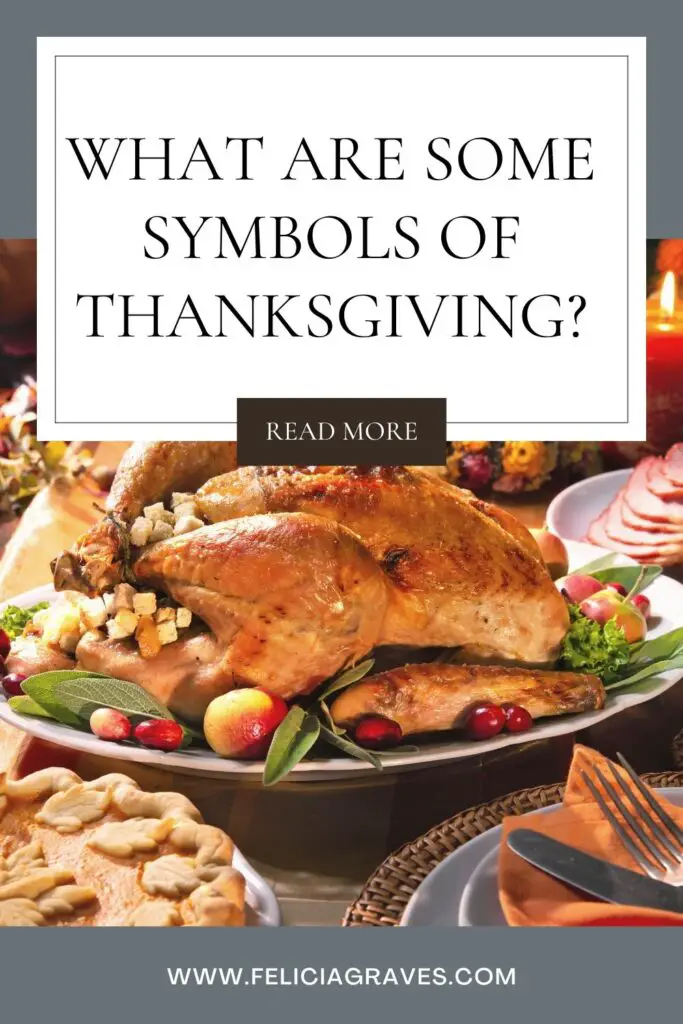

Leave a Reply